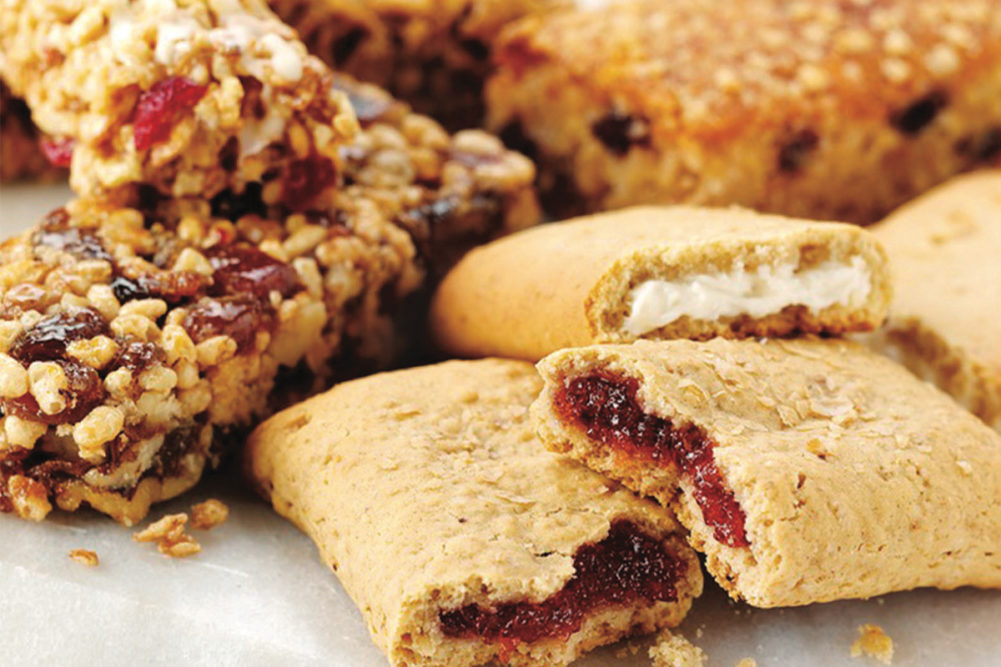There are several ways that formulators can add protein to snack bars without creating texture problems. One solution involves adding crisps.
“At ADM, we produce soy crisps with 60% and 80% protein that are perfect for nutritional bar formulations,” said Wendy van Buren, global commercial growth leader, alternative proteins, ADM.
With high-protein crackers and other sheeted products, processability and texture present a challenge.
“Using high levels of protein in a sheeted snack requires higher levels of moisture compared to traditional snacks,” said Erin Nese, senior technologist, commercial innovation acceleration, Ingredion. “Pea protein, for example, has a high water-holding capacity; a formula with pea protein incorporated will require additional water to achieve a cohesive dough. A cohesive dough is also important for sheeting. If a dough is dry, crumbly or tearing during sheeting, adding a pre-gel starch may help solve the challenge. The final texture in a high protein snack may be dense and hard. Using the right starch texturizer in the formulation can help achieve a light, airy, crispy and/or crunchy snack.”
Another plant-based choice is also environmentally friendly. EverGrain Ingredients is one of the first to offer Upcycled Certified barley fiber.
“As concerns around food waste become more and more prevalent, consumers are looking to upcycled ingredients like our barley fiber and protein ingredients as a solution and path to a better future for themselves and for our planet,” said Giacomo Cattaneo, EverVita product owner, EverGrain Ingredients.
The type of protein and format a formulator uses will depend on the claim the bar or snack maker wants to make. For instance, a keto-friendly bar formulation would need added protein but keep sugar content as low as possible.
“Formulators are recommended to use protein isolates over the concentrates to ensure the highest protein and lowest available carbohydrate content possible, and to reduce the sugar and starch and replace them with dietary fiber,” said Tanya Jeradechachai, vice president of ingredient solutions, research and development, MGP Ingredients Inc. “The protein isolate source must also be functional — viscoelastic — especially in keto-friendly bakery products.”
Isolates have a higher protein content, often upwards of 80% to 90%, depending on the protein source, while concentrates generally have a lower protein content.
This article is an excerpt from the February 2022 issue of Baking & Snack. To read the entire feature on Protein, click here.





